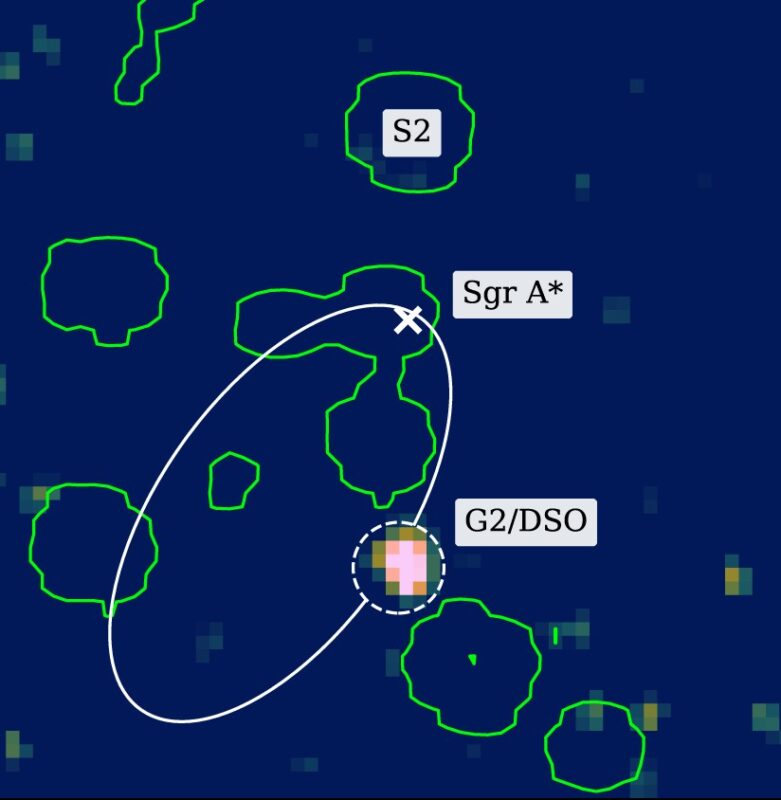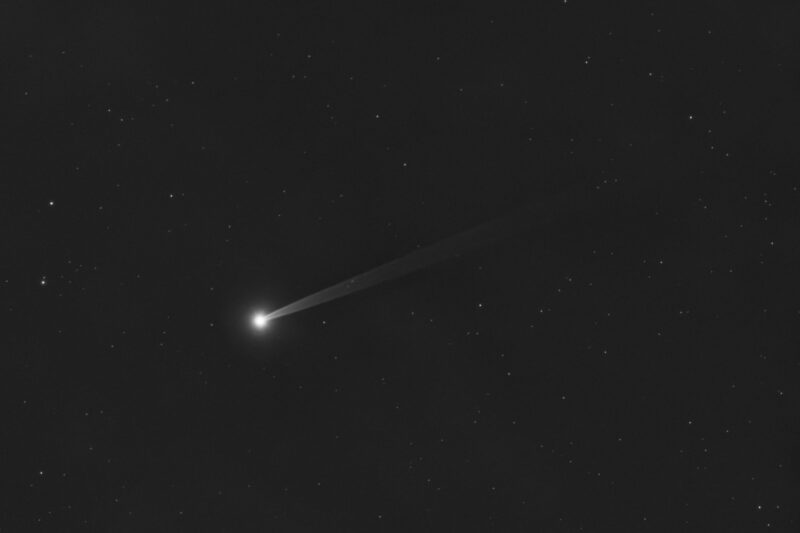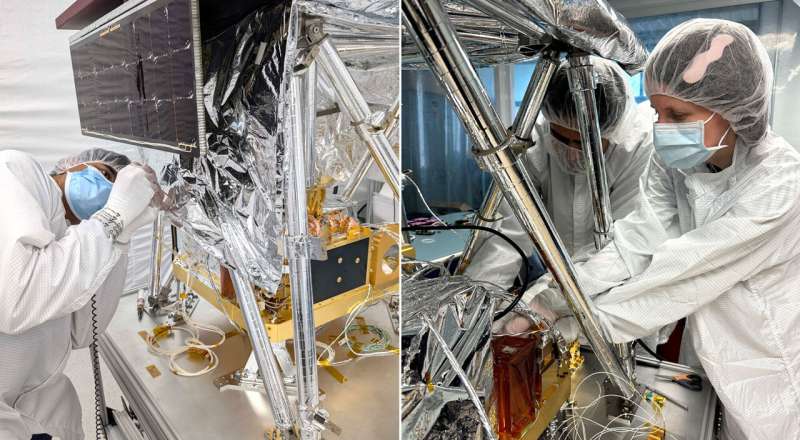Now Reading: This baby exoplanet is shrinking toward a sad destiny
-
01
This baby exoplanet is shrinking toward a sad destiny
This baby exoplanet is shrinking toward a sad destiny
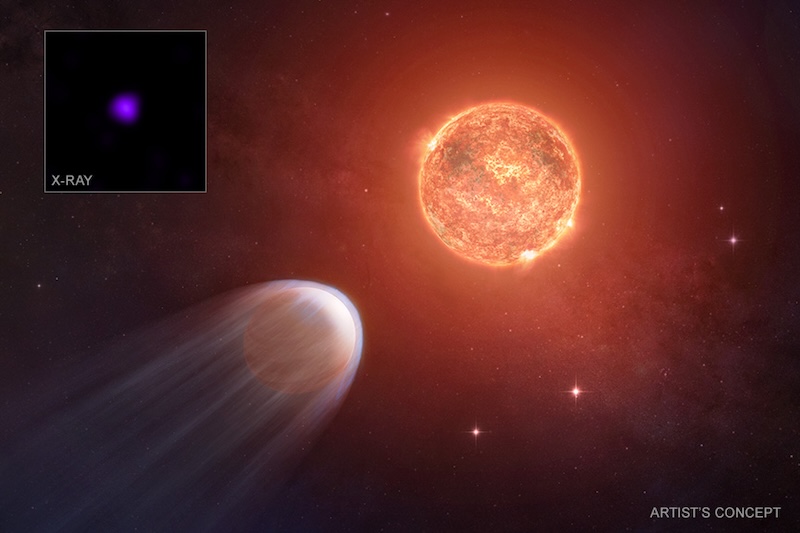
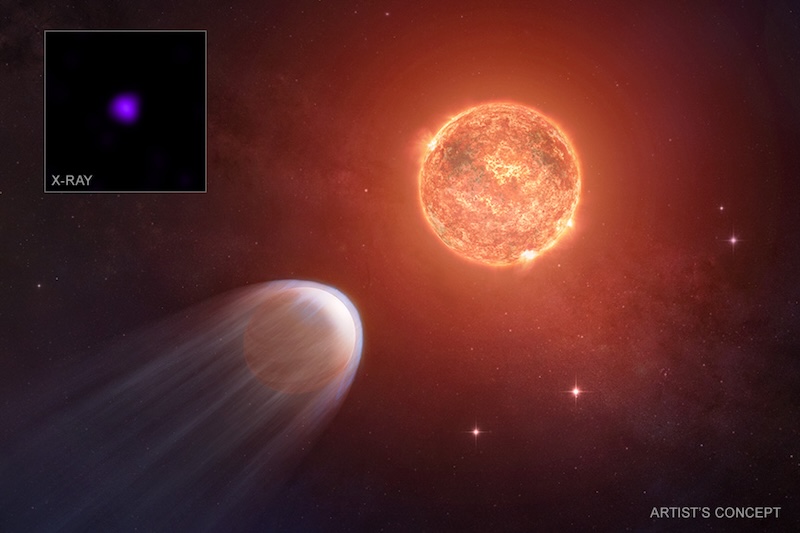
- TOI 1227 b is a young, Jupiter-sized exoplanet 330 light-years away. It orbits close to its small, cool red dwarf star.
- NASA’s Chandra X-ray Observatory observed the planet and found that intense radiation from the star is slowly destroying the planet’s deep atmosphere.
- TOI 1227 b will completely lose its atmosphere in about a billion years, scientists say. As a result, it will shrink to about 1/10 of its current size.
Meet TOI 1227 b
Planets are born in disks of gas and dust around stars. Then they grow larger as they gradually accumulate material. But NASA’s Chandra X-ray Observatory has found a young gas giant planet that is shrinking, instead. A team of researchers from the U.S., Germany and Australia said on July 16, 2025, that the planet – currently about the size of Jupiter and called TOI 1227 b – is slowly losing its atmosphere. In fact, they estimate its atmosphere will entirely disappear in about a billion years from now. The planet will shrink to about 1/10 of its current size. Why? Because intense X-ray radiation from its host red dwarf star is bombarding this ill-fated world.
The researchers used data from Chandra to measure the amount of X-rays coming from the star. This helps them determine how much the radiation is actually affecting the planet’s atmosphere.
TOI 1227 b is about 330 light-years from Earth. It orbits much closer to its red dwarf star than Mercury orbits our sun. Its orbit is about five times closer to its star than Mercury’s orbit is to the sun. It is also a young planet, at only 8 million years old. That’s still a baby, planetary-wise! The star, TOI 1227, is only 1/10 the mass of the sun and much cooler.
The researchers’ new paper has been accepted for publication in The Astrophysical Journal. A preprint version is available on arXiv, which was submitted on June 4, 2025.
Quick Look: NASA’s Chandra finds baby exoplanet is shrinking. Video via NASA/ CXC/ SAO/ A. Jubett/ YouTube.
Baby exoplanet is now shrinking
TOI 1227 b is still young at 8 million years old; it’s just a baby, basically. Like living things, planets grow after they are first born. This happens as they accumulate gas and dust from the surrounding protoplanetary disk around their stars. As of now, TOI 1227 b is about the size of Jupiter. But it is no longer growing. In fact, it is now shrinking in size. Why?
The planet orbits close to a red dwarf star that emits powerful bursts of X-ray radiation. As often happens, those bursts are pummeling the young planet and gradually stripping away its atmosphere. Consequently, this loss of atmosphere decreases the overall size of TOI 1227 b. As Attila Varga, a Ph.D. student at the Rochester Institute of Technology (RIT) in New York, explained:
It’s almost unfathomable to imagine what is happening to this planet. The planet’s atmosphere simply cannot withstand the high X-ray dose it’s receiving from its star.

Sad future for TOI 1227 b
The researchers said TOI 1227 b will likely lose its atmosphere completely, in about a billion years. That means its overall size will diminish greatly, from Jupiter-sized to a small barren rocky world. It will also lose much of its mass, from 17 Earth masses now, to only two Earth masses a billion years from now. The planet is losing the equivalent of Earth’s entire atmosphere about every 200 years. Co-author Alexander Binks at the Eberhard Karls University of Tübingen in Germany said:
The future for this baby planet doesn’t look great. From here, TOI 1227 b may shrink to about 1/10 of its current size and will lose more than 10 percent of its weight.
On a more positive note, however, it’s unlikely that TOI 1227 b has ever hosted any life that would now be facing extinction. Being a gaseous world like Jupiter and so close to its star make the planet most likely uninhabitable, at least for life as we know it.
TOI 1227 b is also the second youngest planet ever to be observed passing in front of – or transiting – its host star. In addition, it has the longest year and the lowest mass of any known exoplanet less than 50 million years old.
Bottom line: NASA’s Chandra X-ray Observatory has found a baby exoplanet that is slowly losing its atmosphere and shrinking as it is pummeled by radiation from its star.
The post This baby exoplanet is shrinking toward a sad destiny first appeared on EarthSky.
Stay Informed With the Latest & Most Important News
Previous Post
Next Post
-
 012024 in Review: Highlights from NASA in Silicon Valley
012024 in Review: Highlights from NASA in Silicon Valley -
 02Panasonic Leica Summilux DG 15mm f/1.7 ASPH review
02Panasonic Leica Summilux DG 15mm f/1.7 ASPH review -
 03How New NASA, India Earth Satellite NISAR Will See Earth
03How New NASA, India Earth Satellite NISAR Will See Earth -
 04And Thus Begins A New Year For Life On Earth
04And Thus Begins A New Year For Life On Earth -
 05Astronomy Activation Ambassadors: A New Era
05Astronomy Activation Ambassadors: A New Era -
06SpaceX launch surge helps set new global launch record in 2024
-
 07From Polymerization-Enabled Folding and Assembly to Chemical Evolution: Key Processes for Emergence of Functional Polymers in the Origin of Life
07From Polymerization-Enabled Folding and Assembly to Chemical Evolution: Key Processes for Emergence of Functional Polymers in the Origin of Life













